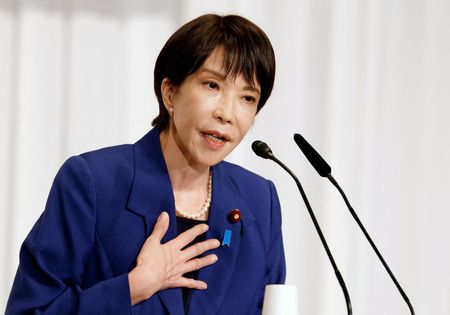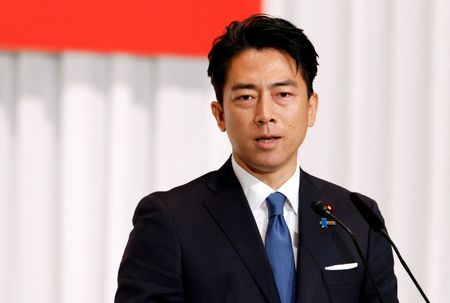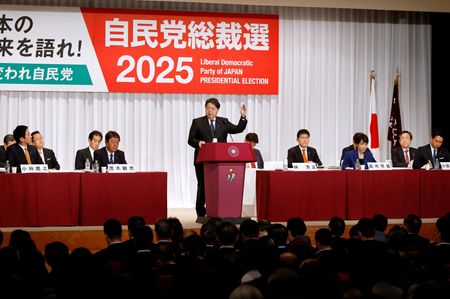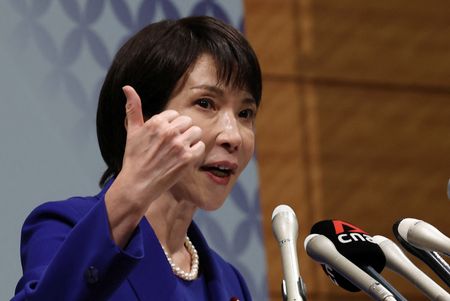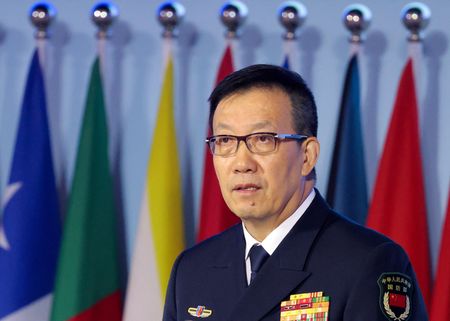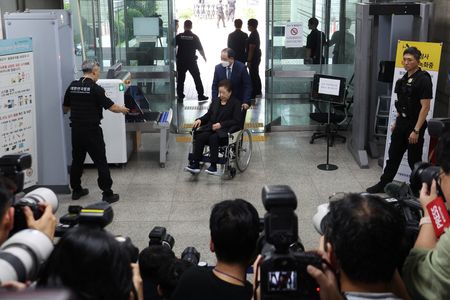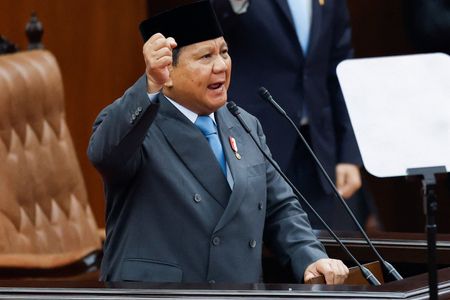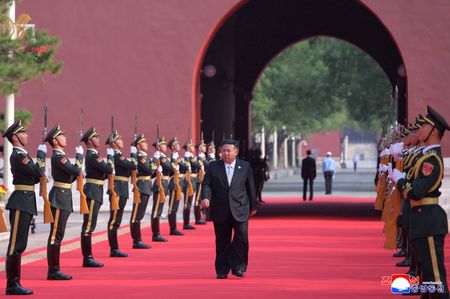TOKYO (Reuters) -The race to choose the next leader of Japan’s ruling Liberal Democratic Party officially kicked off on Monday, with five lawmakers vying to replace outgoing Prime Minister Shigeru Ishiba.
The next leader, set to be chosen by party members and lawmakers in an October 4 ballot, is likely to be elected prime minister by parliament as prime minister since the LDP is the largest party in the lower house.
The frontrunners in the vote are former economic security minister Sanae Takaichi and Farm Minister Shinjiro Koizumi, who also ran in a party leadership race September last year.
Below is the full list of contenders:
SANAE TAKAICHI, 64:
If chosen, Takaichi would be Japan’s first female prime minister. She has held roles including economic security and internal affairs minister, and lost to Ishiba in the LDP leadership race in a run-off vote last year.
A fiscal and monetary policy dove, Takaichi pledged to increase spending and cut taxes in a speech on Friday. She also called for restarting nuclear power plants and establishing a panel to screen foreign investment in sensitive industries.
Known for her nationalistic views, Takaichi is a regular visitor to Yasukuni shrine, which honors Japan’s war dead, including convicted war criminals, and is viewed by some Asian neighbours as a symbol of its past militarism.
Takaichi earlier this year also visited Taiwan, the democratic island claimed by China, where she suggested Taiwan, Japan and other partners could form a “quasi-security alliance”.
SHINJIRO KOIZUMI, 44:
The telegenic heir to a political dynasty with a hand in governing Japan for more than a century, Koizumi would become its youngest prime minister in the modern era if elected.
Son of popular former prime minister Junichiro Koizumi, he has gained prominence in recent months for overseeing the government’s efforts to manage a backlash over surging rice prices. He vowed to boost wages and productivity to counter rising prices in a speech on Saturday.
In his only other cabinet post, as environment minister, Koizumi faced ridicule for remarks that climate policy needed to be “cool” and “sexy”. He is a keen surfer and his brother is a well-known actor in Japanese television and film.
YOSHIMASA HAYASHI, 64:
Hayashi has been Japan’s chief cabinet secretary, a pivotal job that includes serving as the top government spokesperson, since December 2023, under then-premier Fumio Kishida and Ishiba.
He is seen as a steady pair of hands, often thrust into cabinet roles following an incumbent’s resignation.
If promoted to the top job, Hayashi told Reuters in an interview that he would compile a package of relief measures to cushion the blow from the rising cost of living and bolster disaster relief. He has also backed the Bank of Japan’s rate-hike strategy.
A pianist, guitar player and fluent English speaker, Hayashi bonded with former U.S. Secretary of State Antony Blinken over their shared love of music during a stint as foreign minister between 2021-2023.
TOSHIMITSU MOTEGI, 69:
A former foreign minister, Motegi has a reputation as a tough negotiator and handled talks with U.S. Trade Representative Robert Lighthizer during U.S. President Donald Trump’s first term.
A regular golfing partner of slain former premier Shinzo Abe, he has also served as trade minister, economy minister and the LDP’s secretary general.
Motegi studied at the Harvard Kennedy School and worked at the Yomiuri newspaper and consulting firm McKinsey before entering politics in 1993.
He has backed the BOJ’s endeavours to normalise monetary policy and called for companies to shift from holding cash to corporate investment.
TAKAYUKI KOBAYASHI, 50:
Kobayashi served as an economic security minister under Kishida.
He started his career at the finance ministry and worked at Japan’s embassy in the U.S.
Also a graduate of Harvard Kennedy School, he has proposed temporary flat-rate tax reductions and advocates strengthening regulations on foreign acquisitions of companies and land.
Like Takaichi, he appeals to the LDP’s conservative faction with arguments like revising Japan’s pacifist constitution to recognise the role of Japan’s Self Defense Forces.
(Reporting by Satoshi Sugiyama, Leika Kihara and John Geddie; Editing by William Mallard, Stephen Coates and Michael Perry)

